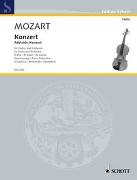- Start
- Social Surveys
Social Surveys
Angebote / Angebote:
Social Surveys is the methods bible for social scientists using survey methods. It provides an unparalleled guide to the state of knowledge in the field and a key asset in practical survey know-how.
A key method of information gathering in the social sciences, surveys provide a structured or systematic set of data. They explore issues of motivation, belief, social, political and economic practices and habits of life. Survey research seeks to discover what causes some phenomena by looking at variation in variables across cases and identifying characteristics that are systematically linked with it.
In these four volumes, the distinguished author on research methods, David De Vaus has combed through the literature to provide readers with the essential contributions in the field. The collection is divided into 11 sections, making it a comprehensive guide to all social scientists using surveys:
1 Methodological Context of Surveys
This section examines the qualitative-quantitative dichotomy, functionalism, feminism and positivism. The contributors include Alan Bryman on the debate about qualitative and quantitative research, Jennifer Platt on the relation between theory and method in functionalism, Anne Oakley on gender and people's ways of knowing, Christopher Bryant on instrumental positivism in the American Tradition, Marsh on survey epistemology and the adequacy of meaning, Blumer on sociological analysis and the `variable'.
2 Ethical Context
This section is devoted to general ethical principles in survey research, privacy, confidentiality and consent, and disclosure in releasing tables and microdata sets. The contributors include Hartley on sampling and the threat to privacy, the Panel on Confidentiality and Data Access on private lives and public policies, Willenberg and de Waal on statistical disclosure control in practice.
3 Institutional Contexts
This section explores the institutional location of survey research, the development of social survey institutions, research for government and using market research companies for academic research. Among the contributors are Fienberg and Tanur on a historical perspective on the institutional bases for survey research, Bulmer on social science research and policy-making in Britain, Wegner on establishing a dialogue and Payne and Harrop on social research and market research.
4 Research Designs
This section examines the role of design and types of design, cross sectional designs, panel designs, comparative designs and official statistics. Included here are Stouffer on study design, Rose on household panel studies, Presser on social change, Duncan and Kalton on issues of design and analysis of surveys across time, Cantor on substantive implications of longitudinal design features, Mitchell on survey materials collected in the developing countries, the United States General Accounting Office on generating new information, and Bulmer on why sociologists do not make more use of official statistics.
5 Collecting Survey Data
This section provides a critical overview of face-to-face interviews, telephone surveys, sampling, mail surveys, internet surveys, e-mail surveys, mixed mode surveying and data-sharing and secondary analysis. The contributors include Cannell and Miller on researching interviewing techniques, Beatty on understanding the standardized/non-standardized interviewing controversy, Groves on theories and methods of telephone surveys, Nicholls on computer-assisted telephone interviewing, Collins on sampling in telephone surveys, Dillman on the design and administration of mail surveys, Jenkins and Dillman on self-administered questionnaire design, Couper on web surveys, the National Council on Public Polls on Internet polls, MacElroy on measuring response rates in online surveys, Sheehan and Hoy on using e-mail surveys, Cho and LaRose on privacy issues in Internet survey work, Dillman on mixed mode approaches, and Kiecolt and Nathan on secondary analysis of survey data.
6 Sampling
This section explores the history and types of sampling. The contributions include Sudman and Blair on sampling in the Twenty-First Century, Hansen on the development of survey sampling, Rothman and Mitchell on creativity and statistics, and Taylor on comparative methods of public opinion research.
7 Survey Error
This section considers the nature and sources of survey error and includes contributions from Deming on survey errors and Groves on research on survey data quality
8 Measurement Error
The section examines issues of reliability, validity, social desirability, acquiescence, social distance, gender, design based error, processing effects and reducing measurement error. The contributors are Schrieber on the reliability of `invariant' characteristics reported in surveys, Campbell and Fiske on convergent and discriminant validation by the multitrait-multimethod matrix, Phillips and Clancy on some effects of `social desirability' in survey work, Grove and Geerken on response bias, McClendon on acquiescence and response order effects in interview surveys, Feldman and Hyman on interviewer effects, Northrup on gender of interviewer effects, de Leeuw and Hox on the effect of computer-assisted interviewing on data quality, Kalton and Schuman on the effect of the question on survey responses, Dex on the reliability of recall data, Jowell on the character of comparative research, Miles and Irvine on the faults of official statistics, Montgomery and Crittenden on improving coding reliability for open ended questions, Foddy on the in-depth testing of survey questions, and DeMaio on improving survey quality through pretesting.
9 Coverage Error
This section investigates the extent to which surveys can access the required population. It examines coverage by telephone surveys, with quota samples and for rare populations. It includes contributions from the subcommittee of survey coverage on coverage errors occuring before sample selection, Link and Oldendick on call screening, O'Rourke and Blair on random respondent selection in telephone surveys, Marsh and Scarbrough on quota sampling, and Sudman and Kalton on sampling special populations.
10 Sampling Error
This section examines sample size and sample type. It includes contributions from Austin on sample size and Sudman on probability sampling with quotas.
11 Non Response Error
This section is devoted to questions of bias, mode effects and theories of non response. Contributors include van der Zouwen and de Leeuw on survey non response, measurement error and data quality, Goyder on socio-demographic determinants of response, Hawkins on the estimation of non response bias, Hox and de Leeuw on non response in mail, telephone and face-to-face surveys, Sharp and Frankel on respondent burden, Bogen on the effect of questionnaire length, Church on the effect of incentives on mail survey response rates, and Singer on informed consent and survey reponse, Snijkers, Hox et al on interviewers tactics for fighting survey non-response, Groves and Lyberg on non response issues in telephone surveys, Laurie, Smith et al on strategies for reducing non response in longitudinal panel surveys, Hertel on minimizing error variance, and Fuller on weighting to adjust non survey response.
The collection will be of interest to students throughout the social sciences, and practitioners in sociology, political science, cultural studies, business studies and social research methods.
About the Editor
David De Vaus is Associate Professor of Sociology at La Trobe University, Melbourne. He is the author of Surveys in Social Research and Research Design in Social Research. He is an international authority in the field of social research.
Folgt in ca. 15 Arbeitstagen



